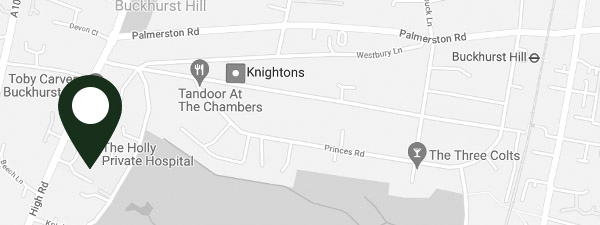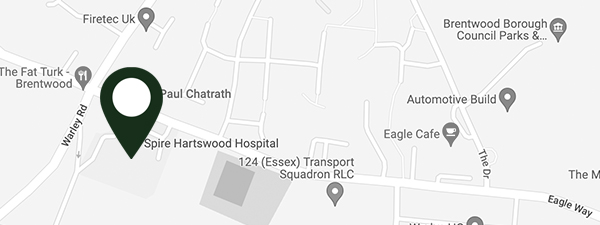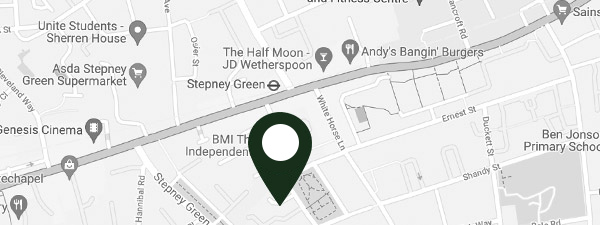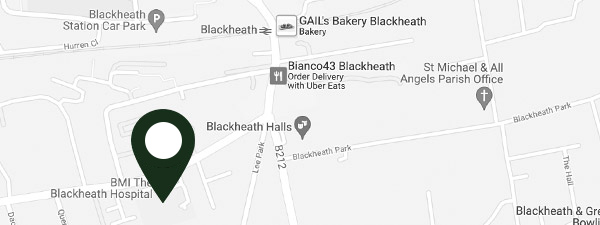Get your glaucoma and cataracts treated with one operation in Hertfordshire, Essex and London
Discover how this MIGs and laser treatment can help drop the pressure in your eyes
Get your glaucoma and cataracts treated with one operation in Hertfordshire, Essex and London
Discover how this MIGs and laser treatment can help drop the pressure in your eyes







The management of glaucoma is all about reducing eye pressure
MIGS is a great solution for patients how have both glaucoma and cataracts
The treatment of glaucoma involves lowering your eye pressure (intraocular pressure). The type of glaucoma you have will determine whether you have a prescription eye drop, oral medication, laser treatment, or surgery as the only option.
Laser Trabeculoplasty
For open-angle glaucoma, laser trabeculoplasty is the first line of treatment. Here, a laser beam is used to open blocked channels in the trabecular meshwork. This procedure may take a few weeks to become fully effective.
Eyedrops
A prescription eye drop is usually used if laser treatment fails. By improving the way fluid drains from your eye or by reducing the amount of fluid your eye makes, these techniques can help reduce eye pressure.Laser therapy and various surgical procedures are also available as treatment options.Researchers have developed several techniques to reduce eye pressure by improving drainage of fluid within the eye:
Filtering surgery
An ophthalmologist performs a trabeculectomy in order to remove part of the trabecular meshwork from the white of the eye (sclera).
Drainage tubes
A small tube is inserted into your eye by an eye surgeon in order to drain away excess fluid and lower your eye pressure.
Minimally invasive glaucoma surgery (MIGS)
Your eye pressure may be lowered with the MIGS procedure.
Trabeculectomy and drainage tube insertion generally require more immediate postoperative care and have higher risks.
Given the number of MIGS techniques available, we will discuss which procedure is best suited to you in a one-to-one consultation.
Follow-up exams are required after your procedure. In the event that your eye pressure begins to rise or other changes occur in your eye, you may eventually need additional procedures.
Treating angle-closure glaucoma
- The treatment for acute angle-closure glaucoma needs to be initiated immediately as it is recognised as a medical emergency. As a result, this will require both medication and laser or other surgical procedures.
- An iris opening may be created with a laser during a laser peripheral iridotomy procedure. This helps to relieve eye pressure by promoting fluid (aqueous humor) to flow through it.
Laser Trabeculoplasty
Advantages
- When your eye pressure is relatively easy to control, laser trabeculoplasty can relieve you of the need to take eye drops, and it has few side effects
- Risks are minimal
Disadvantages
- A disadvantage of laser treatment is that it is a procedure (and any procedure involves risks), it is not a cure, and it wears off over time.
- Some patients don’t want to undergo an operation, so they choose eye drops instead. However, there are some patients who prefer laser treatment over eye drops because they don’t want to remember to put eye drops in or experience their side effects.
Treatment steps
The laser is applied through a special contact lens to the drainage system of the eye, where it induces a biochemical change that facilitates fluid drainage.
What are the risks?
A mild form of postoperative inflammation is common but is usually treated with eye drops or nonsteroidal anti-inflammatory drugs.
A small percentage of people have increased eye pressure after laser treatment, which can usually be treated with glaucoma medications within 24 hours.
Treatment results
As an alternative to conventional surgery, laser therapy is minimally invasive and can be performed quickly.
75-80 percent of patients can expect to see successfully lowered eye pressure, and as a result, no longer suffer with ocular hypertension.
Follow-up treatment may be required if the treatment’s effects wear off.
Glaucoma Eye Drops
Advantages
- The advantages of medications include their minimal intervention
Disadvantages
- On the downside, side effects like redness in the eye and irritation may occur, as do the need to remember to take the medications every day and the ongoing costs based on your prescription coverage.
- It needs long term compliance.
Treatment steps
Step one: You will first be prescribed treatment for glaucoma by your ophthalmologist.
Step two: Following that, it’s up to you to use your eye drops according to your doctor’s instructions.
Step three: We will need to see you regularly once you begin taking medications for glaucoma. You can expect to visit us about every 3–6 months. But this will vary based on the requirements of your treatment.
What are the risks?
There are risks associated with eye drops and medications, including irritation, redness, and allergic reactions, as well as the need to remember to take them every day.
Some eye drops may cause worsening of pre-existing chest or heart problems
Treatment results
Eye drops can help to lower eye pressure, protect the optic nerve and preserve vision.
There are five different eye drops available, and because the results are highly individualised for each patient, we often switch to another if one isn’t effective, or even use a combination.
Glaucoma Surgery
Advantages
- Glaucoma surgery has a good success rate in significantly slowing the progression of the disease
Disadvantages
- The main disadvantage of surgery is the risk of complications in addition to potential side effects. Complications will vary depending on the type of surgery performed, but include:
- Blurred vision after surgery
- Excessive intraocular inflammation
- Intraocular pressure too low or too high
- Bleeding within the eye
- Sight-threatening infection
- Cataract
- Non-successful
Treatment steps
Surgery reduces intraocular pressure by cutting the eye. Depending on the type of glaucoma you have and the severity of your condition, your doctor may suggest a specific type of surgery.
What are the risks?
Surgery for patients with advanced glaucoma typically has more benefits than risks.
We’ve listed the glaucoma surgery risks and side effects below:
- Low eye pressure (or hypotony)
- Choroidal detachment
- Scarring
- Cataract formation
- Vision loss
- Bleeding in the eye
- Infection
- Failure and need further intervention
Treatment results
Recovery can take between four to six weeks after surgery. Your eye may water and be red, and your vision may be slightly blurred, but it should return to normal.
Minimally Invasive Glaucoma Surgery (MIGS)
Advantages
- Minimally invasive
- Less risks
- Reduce need for eye drops
- Quick procedure
- Can be combined with cataract surgery
Disadvantages
- It is a procedure
- Does not work if IOP is very high
Treatment steps
Unlike traditional glaucoma surgery, MIGS involves microscopic-sized equipment or implants, precision lasers, and tiny incisions in the eye, resulting in less tissue trauma and a quicker visual recovery.
What are the risks?
- Bleeding
- Infection
- Failure and need further intervention
Treatment results
Reduces eye pressure and prevents glaucoma progression very effectively. For earlier stages of the disease, MIGS helps to control the pressures, and for patients with more severe diseases, it can work well, although further surgery is likely to be needed in the future.
- Surgery
- Eye drops
- Laser treatment
- MIGS
Give your eyesight a lift to a new level
Don’t let cataracts, glasses or keratoconus get in the way of your life. Instead, contact us today and discover how you can elevate your vision and life to a new standard.
If you can find your challenge below, then we can elevate your vision to a new standard
Choose the option below that sounds most like you

Your vision is yellowing and hazy
Do you have hazy and cloudy vision (even with glasses)? Do colours appear less vibrant? Are you finding it harder to drive or see at night? If you answered yes to any of these questions, it’s possible that you have a cataract.
Did you know that you can get restored clarity (and the need for glasses?). It’s true, you can have both solutions in one with lifestyle cataract surgery.
You don’t want to live with glasses or contacts
Wish for a life free from glasses or contact lenses? Are they making life inconvenient for you or getting in your way? We appreciate how it feels to have to deal with the constant hassle of visual aids.
Vision correction surgery can help you ditch your specs and discover the freedom you’ve been missing.

You have a troublesome eye condition
Besides decreasing quality of life, eye conditions can cause anxiety. Whatever your particular eye condition, we can help you get an accurate diagnosis and a proven treatment plan.
Let us help you move forward with your life by guiding you towards the right eye treatment for your specific issues.
Trade up your eyes in 3 easy steps
Give your eyes a lift to a whole new level


Get In Touch
The first step to restoring your vision or solving your eye condition is to give our friendly team a call. Get the ball rolling calling on 020 4509 8700 or use our easy online form here.


We’ll Meet Locally
We can see you at one of several convenient locations near you. At your assessment, we’ll listen to your concerns, thoroughly assess your eyes and then recommend the best treatment to solve your visual concern.


Upgrade Your Life
After treatment, patients are often surprised by how much their life changes. Visual improvements often bring a newfound sense of freedom, a restoration of youthful function (like reading again over the age of 45, without glasses!), and a refreshed peace of mind.
Academic resources on Glaucoma Treatment
Learn more about glaucoma treatment from authoritative sources
What Is Glaucoma? Symptoms, Causes, Diagnosis, Treatment.
Surgery isn’t usually the first step to treat glaucoma, but it may save your eyesight if other treatments don’t work. Glaucoma is pressure inside your eye, like a basketball being overinflated. Fluid in your eye can’t drain out the way it should.
This article explores the potential risks of glaucoma surgery and explains why the benefits outweigh risks for most advanced cases.
★★★★★
Hundreds of happy patients in Hertfordshire, Essex and London
Now they live life with more freedom, comfort and confidence

“Silvana Madi was very professional. She explained everything about the condition of my eyes and how the procedure would go ahead, as well as everything that would happen in the weeks following my procedure. She was very confident in her professional role.”
Loughton

“Ms Madi was excellent with explaining the procedure and being reassuring at all times. Great carer. Her staff explained everything to me clearly and the following morning I had a wonderful clear vision and the colours of everything I saw was amazing.”
London

“Ms Madi was reassuring as I was very nervous. I felt at ease. Ms Madi was reassuring as I was very nervous. I felt at ease.”
Essex

“My surgeon, Miss Silvana Madi, took great care to obtain the optimum result for me which has exceeded my expectations. I was a very nervous patient but Miss Madi and all her staff helped me overcome my anxieties. I couldn’t have asked for more care and attention.”
Essex

“Silvana Madi was very professional. She explained everything about the condition of my eyes and how the procedure would go ahead, as well as everything that would happen in the weeks following my procedure. She was very confident in her professional role.”
Loughton

“Ms Madi was excellent with explaining the procedure and being reassuring at all times. Great carer. Her staff explained everything to me clearly and the following morning I had a wonderful clear vision and the colours of everything I saw was amazing.”
London

“Ms Madi was excellent with explaining the procedure and being reassuring at all times. Great carer. Her staff explained everything to me clearly and the following morning I had a wonderful clear vision and the colours of everything I saw was amazing.”
Essex
We have replaced the images of real patients who provided these testimonials to protect their privacy
Expert cataract, laser eye surgery and cornea specialist in Hertfordshire, Essex and London
Silvana Madi is here to guide you every step of the way

Silvana Madi
MD, PhD, FRCOphth, CERTLRS
Consultant Ophthalmic Surgeon
Silvana Madi is a consultant ophthalmic surgeon specializing in laser eye surgery, corneal disease treatment, and traditional and lifestyle cataract surgery. She has over 10 years of experience in ophthalmology that includes:
- performing combined cataract surgery and glaucoma treatment (MIGS) to reduce glaucoma eye drop dependency.
- an abundance of experience in glaucoma management, including high-risk and complex cases.
- the most up-to-date practices in corneal transplants to improve quality of vision
- all corneal surgeries including intracorneal rings (INTACs) or PTK to help patients with keratoconus reduce dependence on their glasses
- over 15000 procedures to restore vision, remove dependency on glasses and optimise visual health.





